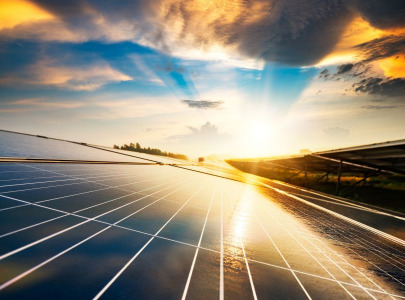Irena report highlights sharp falls in global cost of clean energy

The latest report from the International Renewable Energy Agency (Irena) shows a sharp fall in cost of renewable energy technologies between 2010 and 2021, with the levelised cost of PV solar falling by 88 per cent over this period
A new report from the International Renewable Energy Agency (Irena) shows that between 2010 and 2021 the global weighted average levelized cost of electricity (LCOE) of newly commissioned utility‑scale solar PV projects declined by a remarkable 88 per cent. By the same measure, onshore wind projects fell by 68%, concentrated solar power (CSP) projects by 68 per cent, and offshore wind projects by 60 per cent.
Irena’s report ‘Renewable Power Generation Costs in 2021’, published this week, sees the momentum continuing through last year, when the LCOE of new utility-scale solar PV fell by 13 per cent year-on-year to $0.048/kWh, new onshore wind projects fell by 15 per cent year‑on‑year to $0.033/kWh, and offshore wind projects declined 13 per cent to $0.075/kWh.
The exception in 2021 was CSP in 2021, which by Irena’s measure saw LCOE rise 7 per cent year-on-year to $0.114/kWh. This was largely attributable to the fact that, according to Irena, just one such plant was commissioned last year.
These numbers reflect what Irena calls ‘seismic’ change in the market position of renewables. Its significance is seen in one key measure, that the lifetime costs per kWh of new solar and wind capacity added in Europe in 2021 will average at least four to six times less than the marginal generating costs of fossil fuels in 2022.
Irena’s report shows the rising capability of renewable energy to add important economic gains to its clear environmental benefits. It greatly expands energy security and delivers economic benefits in terms of significant cost savings to countries that adopt renewable energy on large scale.
The report says that new renewable capacity added worldwide in 2021 could reduce electricity generation costs in 2022 by at least $55 billion. It estimates that in Europe, between January and May of this year, solar and wind generation led to avoided fossil fuel imports of at least $50 billion, predominantly natural gas.
Irena anticipates the cost advantages of renewables will continue, despite the current inflationary and supply chain pressures on them. For example, prices of polysilicon for solar panels have surged to their highest level since 2011, according to recent reports.
The agency acknowledges that price pressure on materials costs will likely be more pronounced this year than last. It estimates that solar PV module prices might average a fifth more than they did in 2020. But the actual impact of inflation on LCOE for solar PV and onshore wind is likely to be modest, Irena says, with costs rising this year approximately 2-4 per cent for utility-scale solar PV and 4-9 per cent for onshore wind.
Overall, Irena remains sanguine about renewables’ market advantages, vis-à-vis fossil fuels, asserting that higher costs will be outweighed many times over by the economic benefit of new renewable capacity. This is especially the case considering that high fossil fuel prices already experienced in 2022 are likely to continue.
The agency’s data is derived from 21,000 renewable power generation projects in its Renewable Cost Database, although none of the cost data comes from MENA or African countries.
In terms of actual renewable electricity generation by region, Africa and the Middle East remain close the bottom in comparison of world regions, according to recent Irena data.
In April, Energy & Utilities reported on Irena’s ‘Renewable Capacity Statistics 2022’ report, which shows that a total of 257GW of new renewables capacity was installed in 2021, which accounted for a record 81 per cent of all the new installed capacity in the power sector.
The same report showed that renewable energy share of electricity capacity in the world has reached 38.3 per cent, while in Africa (including North Africa) it is now 23.1 per cent, and in the Middle East (including Iran) it is 7.4 per cent. Hydropower continues as the dominant form of renewable energy in these regions, constituting approximately 65 per cent of renewable capacity in each of them.
Yet the Middle East and Africa have rode the global trend in making impressive gains in renewables, with exponential increases in solar energy capacity in the past ten years. Total installed capacity in solar power as of the end of last year was 11.4GW in Africa and 8.4GW in the Middle East, according to Irena.
Energy & Utilities - Middle East and Africa Market Outlook Report 2024.
This must-have report for industry players offers a thorough understanding of the latest developments, challenges, and opportunities in the region, supported by data, analysis, and expert insights.








